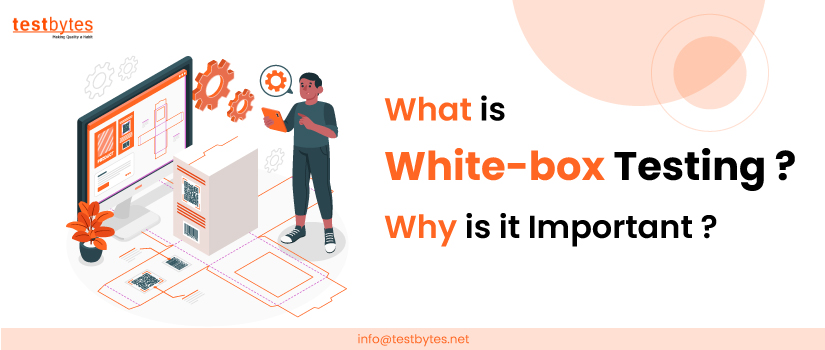
Agile VS DevOps: Difference between Agile and DevOps
April 13th, 2020

Agile vs DevOps which is better? Agile, Scrum, and DevOps are some of the buzzwords these days. They are changing the way people look at how and when testing and automation need to be done. In this section, we will discuss the difference between Agile and DevOps and the testing methodology in both.
What is Agile Methodology?

Agile literally means “moving quick and easy”. In terms of software development, Agile means delivering small chunks of stand-alone and workable codes that are pushed to production frequently. This means your traditional project plans that spanned over months and sometimes years in now cut short to sprints no longer than 2-3 weeks. All timelines are shrunk to deliver working code at the end of each sprint.
Know more: Why Agile testing is so innovative!
What is DevOps Methodology?

DevOps is a set of practices that aim to automate the development, testing, and deployment so that code gets deployed to production as small and rapid releases as part of continuous development and continuous deployment (CI/CD). DevOps is a combination of the terms Development and Operations and aims to bridge the gap between the two entities enabling smooth and seamless production code moves.

Testing in Agile
The traditional STLC holds no good when it comes to Agile. There is no time for all the documentation and the marked-out phases. Everything from plan, design, development, testing, and deployment needs to be winded up in a 2 to 3-week sprint.
Here are some pointers that explain how testing is done in Agile projects:
- Testing is a continuous process. It happens along with the development. The feedback is shared with the dev team then and there, ensuring a quick turn-around.
- Testing is everyone’s responsibility and not only of the testing team. Product quality is the greatest priority.
- With shrinking timelines, documentation is a bare minimum.
- Automation Testing is used for the N-1 iteration code. That is, in the current iteration, the automation team would be automating the functionalities of the last iteration and running the automation code for N-2 iterations. This will give more time for the manual testing team to work on the thorough testing of the current iteration functionalities
Agile Testing Methods
Traditional testing methods are difficult to fit in Agile and are unlikely to give the desired results. The best-suited methods for agile testing are listed below:
- Behavior Driven Testing (BDD)
BDD Testing makes life simple for both testers and developers. The test cases and requirements are written in readable English with keywords (Gherkin Given/When/Then syntax). These requirement documents double up as test cases.
- Acceptance Test-Driven Testing
This is another way of ensuring the best test results for an Agile process. Think and test as a customer would do. In this case, meetings are held between developers, testers, and other team members to come up with different test scenarios to match the application usage by the end-user. These are given the highest priority for testing.
- Exploratory Testing
Another very useful but non-structured testing approach frequently used in the Agile process is exploratory testing. This involves playing around with the application and exploring all areas as per the understanding of the tester. This is done to ensure that there are no failures or app crashes.
Testing in DevOps
DevOps testing is mostly automated just like most of the other things in DevOps. The moment there is a code check-in, automated code validation is triggered. Once that passes the testing suite or Smoke test is triggered to ensure nothing is broken. If everything goes well, the code is pushed to production.
- Most business-critical functionalities are tested through automation or API responses to make sure there are broken functionalities due to the latest code change.
- Based on the business requirement, the automation code can be expanded to include more functionalities or limit to a smoke/sanity test.
- The testing is triggered with the help of microservices and API responses.
DevOps Testing Methods
Here we discuss some tools and techniques in testing that can be very beneficial for the DevOps process. These help to reduce the time-to-market and also improves the overall product and testing efficiency.
- Test-Driven Development (TDD)
In a TDD approach, the developers are expected to write unit test cases for every piece of their code covering all the workflows. These tests ensure that the piece of code is working as per the expectation.
Apart from TDD the DevOps teams also use the ATDD and BDD approach as discussed above in the Agile section. These are equally helpful in ensuring greater quality and a streamlined approach to continuous development and deployment to production.
Read also: Software testing Models: Know about them
Core Values of Agile and DevOps (Agile VS DevOps)
Let us now discuss the core values of Agile and DevOps that make them different from each other.
Agile – Core Values
Below are the values that govern any Agile process.
- People over Process: In Agile there is more focus on the people, their skills, and how best to put them to use. This means elaborate processes and multiple tools may take a backseat. While the process is important, things as rigid as the traditional waterfall model can not work in Agile
- Working code over documentation: Agile lays more importance on a stand-alone working code to be delivered at the end of every sprint. This means that there may not be enough time for all the documentation. In most cases, there will be a minimal document for the agile development processes and more focus is on getting a working code at the end of the sprint.
- Customer Feedback over contract: While there are contracts in place on when and how the complete project needs to be delivered, in Agile the team closes work with the customer and is flexible to move around the dates of the planned features within a specific project line. This means if the client needs a certain feature ahead of time and needs some improvements these can be easily prioritized for the next sprint.
- Flexible over fixed plan: Agile sprints can be redesigned and re-planed as per the customer’s needs. This means the concept of fixed plans does not fit in Agile. Since the Agile plans are created for sprints that are only about 2-3 weeks long, it is easier to move features from one sprint to another as per the business and customer needs easily.
DevOps – Core Values
DevOps is an amalgamation of Development and Operations. Both these teams work together as one to deliver quality code to the market and customers.
- Principle of flow: Flow means the actual development process. This part of DevOps normally follows Agile or Lean. The onus is more on quality than quantity. The timelines are not as important as the quality of the products delivered. But this is true only for new features, not the change requests and hot fixes.
- Principle of feedback: The feedback and any broken functionalities reported in production need to be immediately fixed with hotfixes. The delivery features are flexible based on the feedback received from the features already in production. This is the most important aspect of the feedback principle.
- Principle of continuous learning: The team needs to continuously improvise to streamline the delivery of features and hotfixes. Whatever is developed needs to be automatically tested and then a new build delivered to prod. This is a continuous process.

Wish to know about TMMI (Test Maturity Model Integration) Reas this!
Agile VS DevOps: The key differences
In this section, we have tabulated the differences between Agile and DevOps for a quick understanding and review.
| Feature | Agile | DevOps |
| Type of Activity | Development | Includes both Development and Operations. |
| Common Practices | Agile, Scrum, Kanban, and more | CI (Continuous Integrations), CD (Continuous Deployment) |
| Purpose | Agile is very useful to run and manage complex software development projects | DevOps is a concept to help in the end-to-end engineering process. |
| Focus | Delivery of standalone working code within a sprint of 2-3 weeks | Quality is paramount with time being a high priority in the feedback loop (hotfixes and changes requests) |
| Main Task | Constant feature development in small packets | Continuous testing and delivery to production |
| Length of Sprint | typically, 2-4 weeks | It can be shorter than 2 weeks also based on the frequency of code check-ins. The ideal expectation would be code delivery once in a day to once every 4 hours. |
| Product Deliveries | Frequent, at the end of every sprint | Continuous delivery. Coding, testing, and deployment happen in a cyclic manner |
| Feedback | Feedback and change requests are received from the client or the end-users | Feedback and errors are received from automated tools like build failure or smoke test failures etc. |
| Frequency of Feedback | Feedback received from the client at the end of every sprint or iteration | Feedback is continuous |
| Type of Testing | Manual and Automation | Almost completely automated |
| Onus of Quality | More than quality, priority is on working code. Ensuring good quality is the collective effort by the team. | Very high-quality code only is deployed once it passes all the automated tests. |
| Level of Documentation | Light and Minimal | Light and Minimal (sometimes more than Agile though) |
| Team Skill Set | The team will have a varied skill set based on the development language used and types of testing used | The team will be a mix of development and operations. |
| Team Size | Agile teams are small so they can work together delivering code faster | Teams are bigger and include many stakeholders |
| Tools Used | JIRA, Bugzilla, Rally, Kanban Boards, etc. | AWS, Jenkins, TeamCity, Puppet |
Agile VS DevOps Infographics for quick understanding


Last Thoughts,
Agile VS DevOps which one is better?
Both Agile and DevOps are here to stay. While Agile is a methodology or process that focuses on the delivery of small packets of working code to production, DevOps is more like a culture. A culture that advocates continuous delivery of code to production automatically after successful testing. Agile enhances DevOps and its benefits too. Both work hand-in-hand for a better and more quality product.


 Software Testing Events
Software Testing Events App Testing
App Testing Web App Testing
Web App Testing Game Testing
Game Testing Automation Testing
Automation Testing Load Testing
Load Testing Security Testing
Security Testing Performance Testing
Performance Testing Hire a Tester
Hire a Tester





